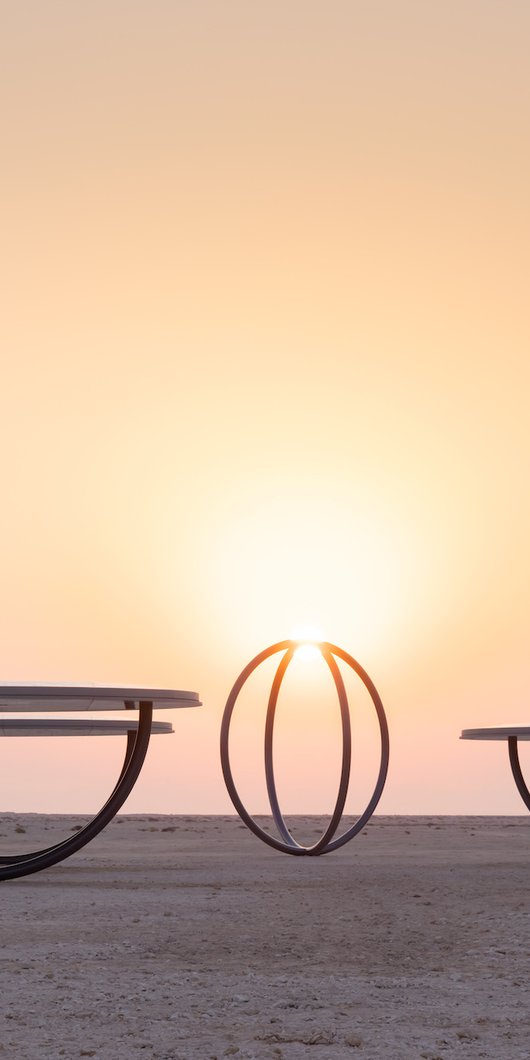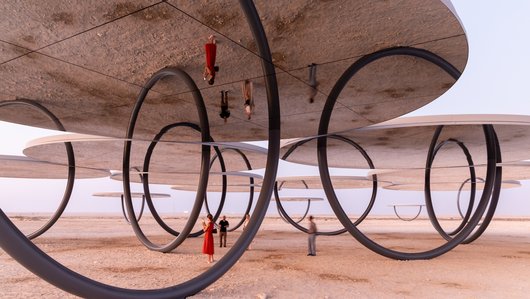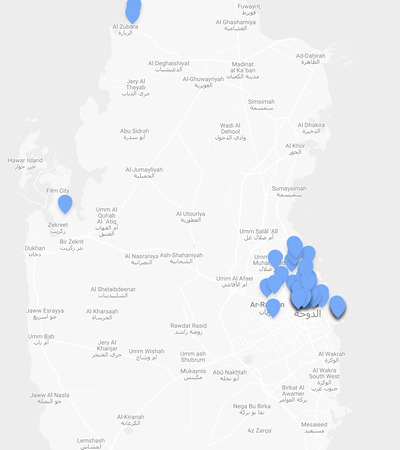The work of Icelandic-Danish artist Olafur Eliasson (b. 1967) explores the role that our perception of the world plays in how we co-produce reality. At his Berlin studio, Eliasson works together with a diverse team of specialized craftsmen, architects, researchers and art historians to create his wide-ranging artistic practice. His installations, sculptures, paintings and photographs often draw from ephemeral materials – like water, fog and light – to enlist the viewer in actively shaping the experience.
The twenty circular shelters, three single rings and two double rings that make up this site-specific artwork appear at first glance to be scattered about the desert landscape at random. They are, however, positioned according to the axes of a fivefold symmetrical pattern, with the ten shelters at the center forming a pentagram. The principles behind such patterns were recently discovered by mathematicians in the West although they may have informed some of the sophisticated designs found in Islamic cultures since medieval times.
The underside of the circular roofs is covered with mirror panels, reflecting the curved segment of pipe that supports the roof. This creates a visual illusion of the pipes doubling into full rings, linking the real landscape with the reflected space. Visitors standing in the shade of the roofs may experience a moment of disorientation, glimpsing themselves and their surroundings reflected upside down in the roofs above.




